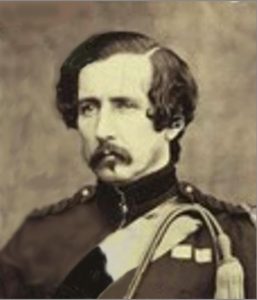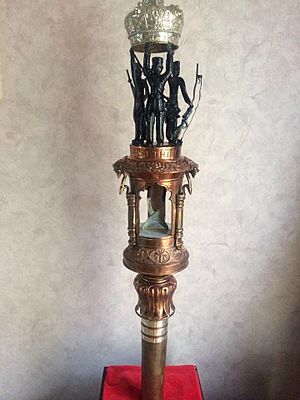Charles Reid (Indian Army officer) facts for kids
Quick facts for kids
General Sir
Charles Reid
GCB
|
|
|---|---|

Reid in 1858
|
|
| Born | 19 March 1818 London, England |
| Died | 23 August 1901 (aged 83). Southsea, England |
| Spouse(s) |
Lavinia Lucy Fisher (c.1829–1888)
(m. 1846) |
| Children | Lavinia Adelaide Reid (1848–1930); Charles Oakeley Reid (1852–1854) |
General Sir Charles Reid (19 March 1818 – 23 August 1901) was an important officer in the East India Company and later the British Indian Army. He also served as an aide-de-camp to Queen Victoria, which meant he was a personal assistant to the Queen.
Contents
Who Was Charles Reid?
Early Life and Family
Charles Reid was born in London, England, on March 19, 1818. His father, George Reid, owned sugar plantations in Jamaica. His mother, Louisa, was the daughter of Sir Charles Oakeley, who used to be a governor in Madras, India.
Charles had five sisters and three brothers. He went to school at Repton School. When he was 16, in 1835, he joined the East India Company as a cadet. This was a company that controlled trade and parts of India for Britain.
Marriage and Children
In 1846, Charles Reid married Lavinia Lucy Fisher in Mussoorie, India. They had two children:
- Lavinia Adelaide (born 1848)
- Charles Oakeley Reid (born 1852), who sadly died young in 1854
General Sir Charles Reid passed away in Southsea, England, on August 23, 1901, at the age of 83. He was buried in Kensington and Chelsea Cemetery.
Military Achievements
Serving in India
Charles Reid began his military career in Sindh, India, in 1843. He served under a famous leader named Sir Charles Napier.
One of his most important roles was leading the Sirmoor Battalion during the Siege of Delhi in 1857. This was a major event during the Indian Rebellion of 1857. Reid was badly injured on September 14, 1857. For his bravery, he was promoted to lieutenant colonel and received the CB award in 1858.
Later Promotions and Honors
After his service in Delhi, Reid continued to serve in Oudh from 1858 to 1859. He was promoted to colonel and became an aide-de-camp to Queen Victoria.
While working for the Queen, he designed the Queen's Truncheon. This is a special ceremonial staff that the Royal Gurkha Rifles carry as their regimental color. It's a symbol of their regiment.
Reid continued to rise through the ranks:
- He became a major-general in 1867.
- He was promoted to lieutenant-general in 1875.
- He became a full general in 1877.
He received special pensions for his good service and for the wound he got in battle.
Awards and Recognition
General Reid received several important medals for his service:
He was also honored with knighthoods:
- In 1871, he became a Knight Commander of the Order of the Bath (KCB).
- In 1886, he was given an even higher honor, becoming a Knight Grand Cross of the order (GCB).
Other Interests
The Leeds Tiger
In 1860, Charles Reid went on a hunting trip and shot a very large Bengal tiger. The tiger's skin was later shown at a big exhibition in 1862.
A man named William Gott bought the skin. He had it prepared by a taxidermist, which means it was stuffed and preserved to look lifelike. This tiger was then displayed in museums in Leeds, England. Today, it is known as the Leeds Tiger and can be seen at the Leeds City Museum. Over time, stories grew that this tiger had been a dangerous animal, but there's no real proof of that.


